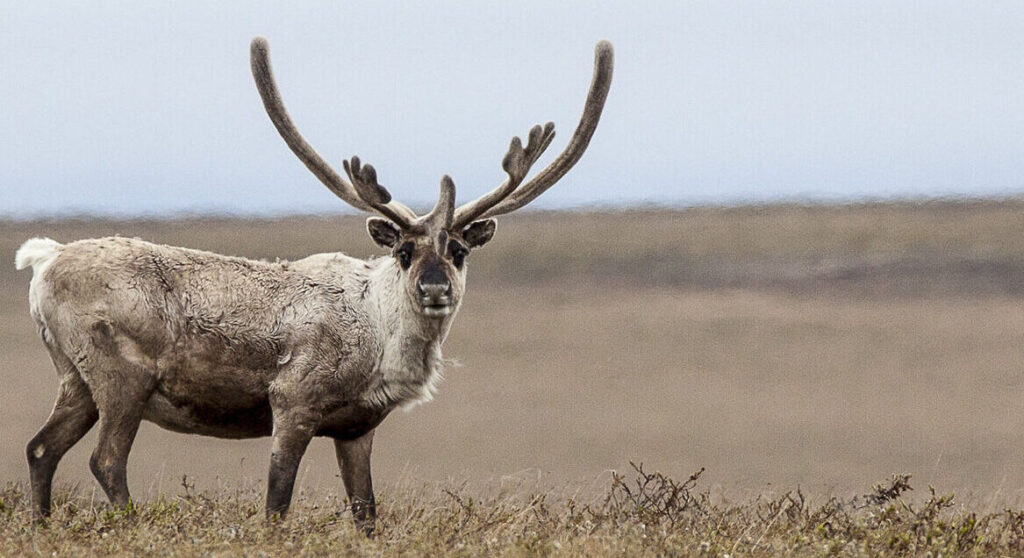Page added on March 18, 2023
Examining Alaska’s Biggest Oil Drilling Project in Decades

Breaking down the recent decision to approve the Willow oil project in Alaska, which also requires new habitat safeguards for the North Slope
This week, the Biden Administration approved a scaled-back version of a major oil project on Alaska’s North Slope. The decision to greenlight the ConocoPhillips Willow project was announced on Monday, following many months of consultation with elected officials, local communities, Alaska Native leaders, and other stakeholders.
As a non-partisan conservation organization that supports collaborative solutions to complex natural resource management issues, the TRCP team feels a responsibility to guide hunters and anglers through the heated rhetoric around this announcement. Here’s our topline assessment of the decision to approve the biggest oil field in Alaska in decades, and what it could mean for important wildlife habitat in Northwest Alaska.
What Is the Willow Project and Where Would It Be Constructed?
Willow is currently the largest proposed oil drilling project on America’s public lands. The Bureau of Land Management estimates that the project could produce up to 576 million barrels of oil over the 30-year life of the project. At its peak, Willow could pump out up to 180,000 barrels of oil a day, or about 1.5 percent of all U.S. oil produced daily.
The Willow project would be constructed in the area known as the National Petroleum Reserve-Alaska. At more than 23 million acres, this expanse is the nation’s single largest tract of undeveloped public land. The region is home to several Alaska Native villages and provides important habitat for caribou, between 80 and 90 species of birds, and polar and grizzly bears.
The NPR-A has been reserved for oil development for many decades, and also includes directives from Congress to ensure the maximum protection of fish and wildlife habitat for Teshekpuk Lake, the Utukok River area, and other areas designated by the Secretary of the Interior. Oil production was not economically feasible until 2015, and the vast landscape has remained mostly intact and wild.
What Is the Willow Project Decision and How Has It Changed?
The Department of the Interior approved a scaled-down version of the Willow project, denying two of the five proposed drill sites. By reducing the project’s drill pads and surface infrastructure, the DOI is decreasing Willow’s footprint on public lands while ensuring the project remains economically viable. This balance is important because ConocoPhillips has held lease rights in the NPR-A since the late 1990s, and the leases are regarded as binding agreements. If the Interior Department had not approved Willow, the energy company could have sued the federal government and, if successful, been awarded billions in damages. Then, after a costly legal battle, ConocoPhillips could still have been allowed to drill.
Forced by a federal judge to address the flaws in the previous administration’s environmental analysis of Willow, the Bureau of Land Management and Interior used this review process to craft a solution that respects the existing leases while mitigating the project by securing additional safeguards for important habitat.
According to a statement by the Department, ConocoPhillips has agreed to surrender rights to 68,000 acres of its existing leases, mostly in the Teshekpuk Lake Special Area. The reduced project scope will decrease the project’s freshwater use and potential impacts to caribou calving grounds and migration routes.
How Much Support Is There for the Willow Project?
There is fairly broad political support for the project across Alaska, including among the bipartisan congressional delegation, the state legislature, and the Alaska Federation of Natives. In the North Slope region, support has been described as a “majority consensus,” although notable opposition and concern about subsistence impacts have been expressed across the region and particularly from Nuiqsut, the community closest to the proposed development.
Environmental groups and climate activists are deeply concerned about the expected greenhouse gas emissions from the project. The BLM’s analysis estimates that using the oil produced by the Willow project would result in 239 metric tons of carbon emissions, the equivalent of adding nearly two million cars to the roads each year.
What Does the Willow Project Mean for Wildlife Habitat in the Northwest Arctic?
The Department’s Willow decision reduces the amount of surface infrastructure within ecologically sensitive areas, such as yellow-billed loon nesting areas, caribou calving grounds, and caribou migration routes. Although scaled down, the Willow project still carries impacts to habitat, wildlife and subsistence that should be minimized. For example, the approved version of the project has 21,114 fewer acres of caribou disturbances than the project proponent’s plan. Yet even with mitigation measures in place, some unavoidable impacts to caribou would occur.
Willow would also result in 532 acres of lost wetlands, 619 acres of potential polar bear habitat disturbances, and 17,037 acres of disturbances for birds. Durable mitigation, monitoring, and enforcement will be critical to ensuring development near Willow’s drill sites is least impactful to the region’s unique wildlife resources and hunting traditions.
What Other Conservation Measures Is the Biden Administration Considering in the Northwest Arctic?
In tandem with the Willow decision, the Interior Department recently announced a new public process to consider additional safeguards for more than 13 million acres of important habitat within the NPR-A for grizzly and polar bears, caribou, and hundreds of thousands of migratory birds. These safeguards would be focused on the Teshekpuk Lake, Utukok Uplands, Colville River, Kasegaluk Lagoon, and Peard Bay Special Areas. The NPR-A protections would bar development from landing in the reserve near Teshekpuk Lake.
The department also plans to “complete protections of the entire U.S. Arctic Ocean from any future oil and gas leasing” by withdrawing 2.8 million acres of the Beaufort Sea from development.
What Is TRCP’s Take on the Willow Decision?
Our team at the TRCP supports the transition to cleaner energy, and we know that will take some time. Domestic oil production efforts—assuming the impacts to wildlife and local residents can be minimized—can be valuable bridges while we continue to reduce the demand for fossil fuels.
While this decision is far from perfect, as few real-world outcomes are, the TRCP believes the BLM attempted to thread a needle on the Willow project in working to offset impacts with conservation gains. Now, the TRCP calls on the administration to follow through with its commitments to increasing conservation measures and subsistence safeguards in the region and to do so in a timely manner.
2 Comments on "Examining Alaska’s Biggest Oil Drilling Project in Decades"


dino game on Wed, 29th Mar 2023 12:02 am
Great information about biggest oil drilling project.
RivBoat on Wed, 29th Mar 2023 4:53 am
Alaska drilling will become stranded assets as the electric transportation system transforms to electricity.